 W
WThe medieval Byzantine Empire underwent a revival during the reign of the Greek Macedonian emperors of the late 9th, 10th, and early 11th centuries, when it gained control over the Adriatic Sea, Southern Italy, and all of the territory of the Tsar Samuil of Bulgaria.
 W
WThe Macedonian dynasty ruled the Byzantine Empire from 867 to 1056, following the Amorian dynasty. During this period, the Byzantine state reached its greatest extent since the Muslim conquests, and the Macedonian Renaissance in letters and arts began. The dynasty was named after its founder, Basil I the Macedonian who came from the Theme of Macedonia, which, at the time, was part of Thrace.
 W
WMacedonian Renaissance is a label sometimes used to describe the period of the Macedonian dynasty of the Byzantine Empire (867–1056), especially the 10th century, which some scholars have seen as a time of increased interest in classical scholarship and the assimilation of classical Hellenistic motifs into Christian artwork.
 W
WAlexander, sometimes numbered Alexander II, or Alexander III ruled as Emperor of the Byzantine Empire in 912–913.
 W
WMacedonian art is the art of the Macedonian Renaissance in Byzantine art. The period followed the end of the Byzantine iconoclasm and lasted until the fall of the Macedonian dynasty, which ruled the Byzantine Empire from 867 to 1056, having originated in Macedonia in the Balkans. It coincided with the Ottonian Renaissance in Western Europe. In the 9th and 10th centuries, the Byzantine Empire's military situation improved, and art and architecture revived.
 W
WBasil I, called the Macedonian, was a Byzantine Emperor who reigned from 867 to 886. Born a simple peasant in the theme of Macedonia, he rose in the Imperial court. He entered into the service of Theophilitzes, a relative of Emperor Michael III, and was given a fortune by the wealthy Danielis. He gained the favour of Michael III, whose mistress he married on the emperor's orders, and was proclaimed co-emperor in 866. He ordered the assassination of Michael the next year. Despite his humble origins, he showed great ability in running the affairs of state. He was the founder of the Macedonian dynasty. He was succeeded upon his death by his son Leo VI.
 W
WBasil II Porphyrogenitus, nicknamed the Bulgar Slayer, was the senior Byzantine Emperor for almost 50 years, having been a junior colleague to other emperors since 960. He and his brother Constantine were named as co-rulers before their father Romanos II died in 963. The throne went to two generals, Nikephoros Phokas then John Tzimiskes, before Basil became senior emperor. His influential great-uncle Basil Lekapenos was the de facto ruler of the Byzantine Empire until 985. Basil II then held power for forty years.
 W
WThe Basilika was a collection of laws completed c. 892 AD in Constantinople by order of the Byzantine Emperor Leo VI the Wise during the Macedonian dynasty. This was a continuation of the efforts of his father, Basil I, to simplify and adapt the Emperor Justinian I's Corpus Juris Civilis code of law issued between 529 and 534 which had become outdated. The term "Basilika" comes not from the Emperor Basil's name, but rather from Greek: τὰ βασιλικά meaning "Royal Laws".
 W
WConstantine VII Flavius Porphyrogenitus was the fourth Emperor of the Macedonian dynasty of the Byzantine Empire, reigning from 6 June 913 to 9 November 959. He was the son of Emperor Leo VI and his fourth wife, Zoe Karbonopsina, and the nephew of his predecessor Emperor Alexander.
 W
WConstantine IX Monomachos, Latinized as Monomachus, reigned as Byzantine emperor from 11 June 1042 to 11 January 1055. He had been chosen by Zoë Porphyrogenita as a husband and co-emperor in 1042, although he had been exiled for conspiring against her previous husband, Emperor Michael IV the Paphlagonian. They ruled together until Zoë died in 1050.
 W
WConstantine VIII Porphyrogenitus was de jure Byzantine Emperor from 962 until his death. He was the younger son of Emperor Romanos II and Empress Theophano. He was nominal co-emperor for 63 years, successively with his father; stepfather, Nikephoros II Phokas; uncle, John I Tzimiskes; and brother, Basil II.
 W
WEudokia (Eudocia) Ingerina was a Byzantine Empress as the wife of the Byzantine emperor Basil I, the mistress of his predecessor Michael III, and the mother of Leo VI the Wise, Alexander and Stephen I of Constantinople.
 W
WZoe Karbonopsina, also Karvounopsina or Carbonopsina, i.e., "with the Coal-Black Eyes", was an empress consort and regent of the Byzantine empire. She was the fourth spouse of the Byzantine Emperor Leo VI the Wise and the mother of Constantine VII, serving as his regent from 914 until 919.
 W
WChristopher Lekapenos or Lecapenus was the eldest son of Emperor Romanos I Lekapenos and co-emperor of the Eastern Roman Empire from 921 until his death in 931. Christopher was given the position of megas hetaireiarches in spring 919, after Romanos assumed the position of basileopator. Romanos, in order to give his family precedence over the more Macedonian line, raised Christopher to co-emperor on 21 May 921. In 928 Christopher's father-in-law, Niketas, unsuccessfully attempted to incite Christopher to usurp his father, resulting in Niketas being banished. Christopher died in August 931, succeeded by his father and two brothers, Stephen Lekapenos and Constantine Lekapenos, and Constantine VII. In December 944 his brothers overthrew and exiled his father, but they themselves were exiled after attempting to oust Constantine VII.
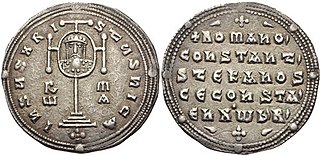 W
WConstantine Lekapenos or Lecapenus was the third son of the Byzantine emperor Romanos I Lekapenos, and co-emperor from 924 to 945. With his elder brother Stephen, he deposed Romanos I in December 944, but was overthrown and exiled by the legitimate emperor Constantine VII a few weeks later. Constantine was exiled to the island of Samothrace, where he was killed while attempting to escape sometime between 946 and 948.
 W
WStephen Lekapenos or Lecapenus was the second son of the Byzantine emperor Romanos I Lekapenos, and co-emperor from 924 to 945. With his younger brother Constantine, he deposed Romanos I in December 944, but was overthrown and exiled by the legitimate emperor Constantine VII a few weeks later. Stephen lived out his life in exile on the island of Lesbos, where he died on Easter 963.
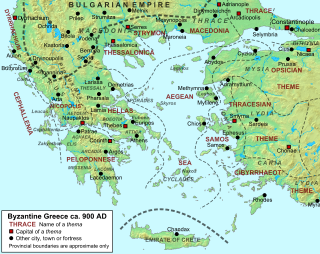 W
WThe Theme of Macedonia was a military-civilian province (theme) of the Byzantine Empire established between the late 8th century and the early 9th century. Byzantine Macedonia had no relation to the Ancient Macedonia but lay to the east in the modern region of Thrace. Its capital was Adrianople.
 W
WMichael V Kalaphates was Byzantine emperor for four months in 1041–1042. He was the nephew and successor of Michael IV and the adoptive son of his wife Empress Zoe. He was popularly called "the Caulker" in accordance with his father's original occupation.
 W
WMichael IV the Paphlagonian was Byzantine Emperor from 11 April 1034 to his death on 10 December 1041.
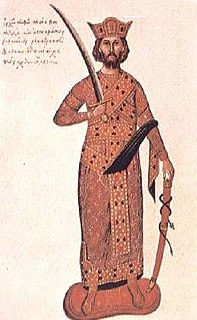 W
WNikephoros II Phokas, Latinized Nicephorus II Phocas, was Byzantine Emperor from 963 to 969. His brilliant military exploits contributed to the resurgence of the Byzantine Empire during the 10th century. His reign, however, included controversy. In the west, he inflamed conflict with the Bulgarians and saw Sicily completely turn over to the Muslims, while he failed to make any serious gains in Italy following the incursions of Otto I. Meanwhile, in the east, he completed the conquest of Cilicia and even retook the island of Cyprus, thus opening the path for subsequent Byzantine incursions reaching as far as Upper Mesopotamia and the Levant. His administrative policy was less successful, as in order to finance these wars he increased taxes both on the people and on the church, while maintaining unpopular theological positions and alienating many of his most powerful allies. These included his nephew John Tzimiskes, who would take the throne after killing Nikephoros in his sleep.
 W
WRomanos I Lekapenos, Latinized as Romanus I Lecapenus, was an Armenian who became a Byzantine naval commander and reigned as Byzantine Emperor from 920 until his deposition on December 16, 944.
 W
WRomanos II or Romanus II was Byzantine Emperor from 959 to 963. He succeeded his father Constantine VII at the age of twenty-one and died suddenly four years later.
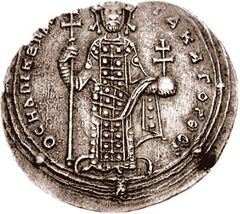 W
WRomanos III Argyros, or Romanus III Argyrus, was Byzantine Emperor from 15 November 1028 until his death. He was a Byzantine noble and senior official in Constantinople when the dying Constantine VIII forced him to divorce his wife and marry the emperor's daughter Zoë. Upon Constantine's death three days later, Romanos took the throne.
 W
WStephen I was the Ecumenical Patriarch of Constantinople from 886 to 893.
 W
WTheodora III Porphyrogenita was Byzantine Empress from 19 April 1042 to her death on 31 August 1056. She was sole ruler from 11 January 1055. She was born into the Macedonian dynasty that ruled the Byzantine Empire for almost two hundred years.
 W
WTheophano Martinakia was a Byzantine Empress by marriage to Leo VI the Wise. She is venerated as a saint by the Eastern Orthodox Church.
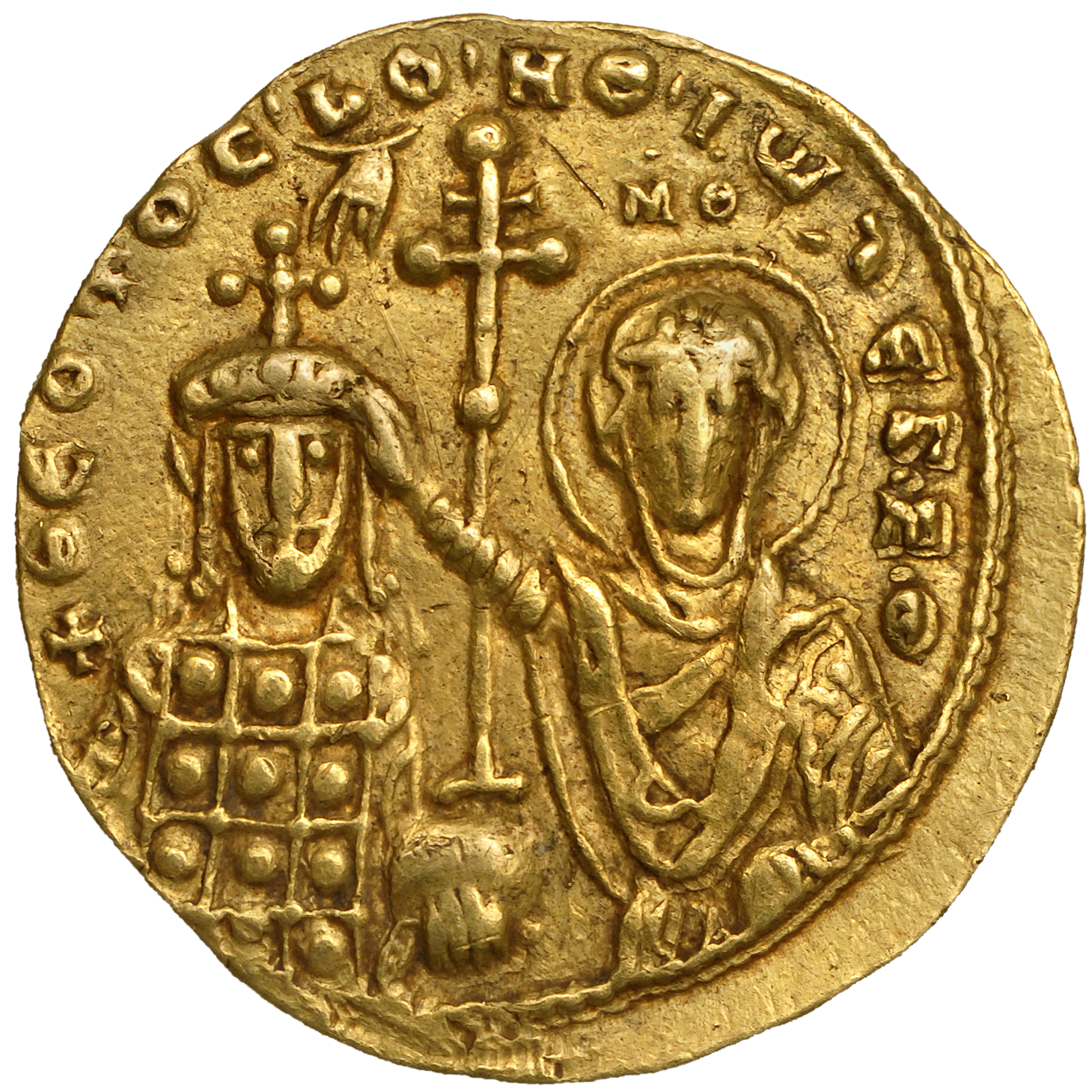 W
WJohn I Tzimiskes was the senior Byzantine Emperor from 11 December 969 to 10 January 976. An intuitive and successful general, he strengthened the Empire and expanded its borders during his short reign.
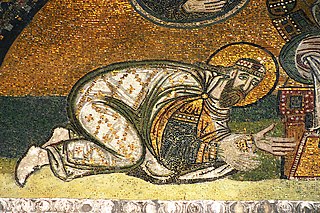 W
WLeo VI, called the Wise or the Philosopher, was Byzantine Emperor from 886 to 912. The second ruler of the Macedonian dynasty, he was very well-read, leading to his epithet. During his reign, the renaissance of letters, begun by his predecessor Basil I, continued; but the Empire also saw several military defeats in the Balkans against Bulgaria and against the Arabs in Sicily and the Aegean. His reign also witnessed the formal discontinuation of several ancient Roman institutions, such as the Roman consul and Senate, which continued to exist in name only and lost much of their original functions and powers.
 W
WZoë Porphyrogenita was Byzantine Empress from 11 November 1028 until her death in 1050.